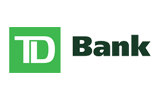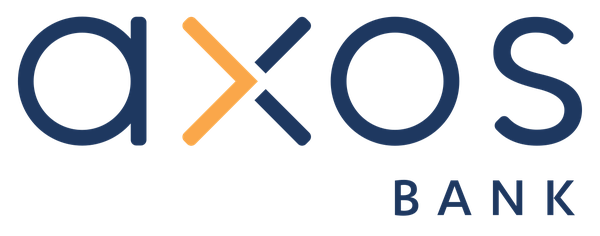Whether you're a first-time borrower or looking to refinance existing debt, finding the best low-interest personal loan can save you money in the long run and provide the financial flexibility you need.
Lender | APR | Min Score | Amount | |
|---|---|---|---|---|
PenFed Credit Union | 8.49% – 17.99% | 650
| $600 – $50,000
| |
 | Wells Fargo Personal Loan | 8.49% – 24.49%
| 660
| $3,000 – $100,000
|
| Discover | 7.99% – 24.99%
| 660
| $2,500 – $40,000
|
| Citibank Personal Loan | 10.49% – 19.49% APR
| 680
| $2,000 – $30,000
|
| Axos Bank
| 11.79% – 20.84%
| 700
| $5,000 – $50,000
|
| SoFi | 8.99% – 29.99%
| 680
| $5,000 – $100,000
|
Navy Federal Credit Union
| 7.49% – 18.00%
| N/A
| $250 – $50,000
| |

| TD Bank | 8.99% – 23.99%
| N/A
| $2,000 – $50,000
|
Low-interest rates are beneficial because they result in lower overall borrowing costs. When obtaining a loan with a low-interest rate, borrowers pay less in interest over the loan term, reducing the total amount repaid. This makes monthly payments more manageable and frees up funds for other expenses or savings.
Additionally, low-interest loans can help borrowers build or maintain a good credit score by demonstrating responsible repayment behavior.
Discover
APR
Loan Term
Minimum Score
Loan Amount
- Overview
- Pros & Cons
- FAQ
With Discover Personal Loans, borrowers can access loan amounts ranging from $2,500 to $40,000, making it suitable for a wide range of financial needs. These loans come with fixed-rate options and terms ranging from 36 to 84 months, providing flexibility to tailor repayment schedules according to individual budgets and preferences.
One notable feature of Discover Personal Loans is the absence of origination fees, application fees, or prepayment penalties. Additionally, Discover offers quick funding, with approved borrowers often receiving funds as soon as the next business day after accepting loan terms.
Some drawbacks of Discover Personal Loans include the minimum credit score requirement of 660, which may limit eligibility for individuals with lower credit scores. Additionally, co-signers are not accepted, and Discover does not provide rate discounts for enrolling in automatic payments.
- Soft Pull Inquiry
- No Origination Fee
- Direct Payment to Creditors
- Competitive Interest Rates
- Available in All States
- No Rate Discounts
- $39 Late Fee
- No Joint Borrowers
- No Co-Signer Option
How quickly can I receive funds after approval of my Discover Personal Loan application?
In many cases, approved borrowers may receive funds as soon as the next business day after accepting loan terms, providing quick access to needed funds for various expenses.
Are co-signers or joint loans available for Discover Personal Loans?
No, Discover Personal Loans are only available to individuals, so co-signers or joint loans are not options.
What happens if I miss a payment on my Discover Personal Loan?
If you miss a payment, Discover may charge a late fee of $39. Additionally, missing payments can have negative consequences on your credit score and overall financial health.
Can I pay off my Discover Personal Loan early?
Yes, borrowers can pay off a Discover Personal Loan early without facing any prepayment penalties, providing flexibility for borrowers to become debt-free sooner.
How can I contact Discover's customer service for assistance with my Personal Loan?
You can reach Discover's customer service by calling their loan specialists at 866-248-1255. Additionally, you can contact Discover’s Customer Advocacy Group at 302-328-3300.
PenFed credit union
APR
Loan Term
Minimum Score
Loan Amount
- Overview
- Pros & Cons
- FAQ
PenFed Personal Loans offer a versatile financing solution for individuals seeking to address various financial needs. With loan amounts ranging from $600 to $50,000, borrowers have flexibility to fund projects, consolidate debt, cover unexpected expenses, or finance personal events. The application process is streamlined, with quick funding typically within one to two business days, providing borrowers with prompt access to funds.
One of the key advantages of PenFed Personal Loans is the absence of origination or prepayment fees, making them a cost-effective option for borrowers. Additionally, PenFed allows co-borrowers on applications, which can improve approval chances or secure better terms.
However, PenFed Personal Loans has a relatively high minimum credit score requirement of 650, which may exclude individuals with lower credit scores from accessing these loans. Additionally, borrowers must become members to finalize their loans.
- Small Loan Sizes
- No Origination Fee
- Mobile App
- Joint Loans
- Quick Funding
- Financial Hardship Programs
- Membership Required
- High Minimum Credit Score
- No Direct Payments to Creditors
- No Refinancing Option
How quickly can I receive funds after approval?
Funds are typically disbursed within one to two business days, depending on the chosen disbursement method.
Is membership required to apply for a PenFed personal loan?
While membership is not required to apply, borrowers must become members to finalize their loans, which involves opening a savings account with a minimum deposit of $5.
Are there any restrictions on how I can use the loan proceeds?
PenFed personal loans can be used for various purposes, such as debt consolidation, home improvement, and medical expenses, but cannot be used for refinancing student loans or funding secondary education.
Are there any penalties for paying off the loan early?
No, PenFed does not charge prepayment penalties, so borrowers can pay off their loans early without incurring additional fees.
Can I apply for a personal loan if I'm not a U.S. citizen?
PenFed personal loans are available to U.S. citizens and permanent residents with a valid Social Security number or individual taxpayer identification number.
Axos Bank
APR
Loan Term
Minimum Score
Loan Amount
- Overview
- Pros & Cons
- FAQ
Axos Bank offers a diverse range of financial products, including personal loans tailored to meet various borrowing needs. With competitive APRs ranging from 7.99% to 15.19%, Axos personal loans provide flexibility and accessibility to borrowers seeking funding for a variety of purposes.
Borrowers can request loan amounts ranging from $5,000 to $50,000, with funding typically disbursed within one to three business days upon approval. While Axos Bank does not charge prepayment penalties, borrowers should be aware of potential origination fees, ranging from 1% to 2% of the loan amount, as well as late fees and insufficient funds fees.
Axos Bank operates in all 50 states and Washington, D.C., offering its personal loan products to a broad customer base. While the bank does not allow co-signers or co-applicants for personal loans, it provides refinancing options after six months for borrowers seeking to improve their loan terms.
- Competitive Interest Rates
- Get prequalified within minutes
- Fast Funding
- No Prepayment Penalties
- Available in All States
- High Credit Score Requirement
- Origination Fee
- High Minimum Amount
- No Co-Signer Option
What are the eligibility requirements for an Axos personal loan?
To qualify for a personal loan from Axos Bank, applicants typically need a minimum credit score of 700, stable income, and a low debt-to-income ratio. Additionally, borrowers must be U.S. citizens or permanent residents and at least 18 years old.
What documents do I need to apply for an Axos personal loan?
Applicants will need to provide personal identification, proof of income, such as pay stubs or tax returns, and details about their employment and financial history.
How do I apply for an Axos personal loan?
The application process can be completed entirely online through the Axos Bank website, providing convenience and accessibility to borrowers.
Are co-signers or co-applicants allowed for Axos personal loans?
No, Axos Bank does not allow co-signers or co-applicants for personal loans.
Are there any fees associated with an Axos personal loan?
While Axos Bank does not charge prepayment penalties, borrowers should be aware of potential origination fees, ranging from 1% to 2% of the loan amount, as well as late fees and insufficient funds fees.
Citibank Personal Loan
APR
Loan Term
Minimum Score
Loan Amount
- Overview
- Pros & Cons
- FAQ
Citibank offers personal loans to both new and existing customers, providing access to funds for various financial needs. With loan amounts ranging from $2,000 to $30,000 and flexible repayment terms of one to five years, Citibank's personal loans cater to a wide range of borrowers. One of the notable advantages of Citibank's personal loans is the absence of origination fees, late payment fees, and prepayment penalties, allowing borrowers to save on upfront costs and pay off their loans early without incurring additional charges.
Existing Citibank customers may benefit from streamlined application processes and rate discounts, while quick funding options make it suitable for individuals needing immediate access to funds.
However, Citibank's personal loans have some limitations, such as the requirement for applicants to have a Citibank deposit account and the inability to add cosigners or joint applicants. Additionally, the maximum loan amount of $30,000 may not be sufficient for those needing larger sums of money.
- Competitive Interest Rates
- No Origination Fee
- Fast Funding
- Rate Discounts
- Flexible Repayment Terms
- Existing Customer Requirement
- No Prequalification Option
- Limited Loan Amounts
- No Co-Signer Option
What are the repayment terms available for Citibank personal loans?
Citibank offers repayment terms of one to five years, allowing borrowers to choose a term that aligns with their budget and financial goals.
How quickly can I receive funds after approval?
Funds from a Citibank personal loan may be available as soon as the same day of approval for customers with a Citibank deposit account, or within several business days for those without.
Can I apply for a Citibank personal loan if I'm not an existing customer?
Yes – but you'll need toi open an account as a new customer.
Can I make extra payments or pay off my Citibank personal loan early?
Yes, borrowers can make extra payments or pay off their Citibank personal loan early without incurring prepayment penalties, allowing them to save on interest costs and pay off their loan faster.
Can I check my loan rates without impacting my credit score?
Citibank does not offer a prequalification process for personal loans, meaning that checking loan rates requires undergoing a hard credit inquiry, which may temporarily impact the borrower's credit score.
U.S. Bank
APR
Loan Term
Minimum Score
Loan Amount
- Overview
- Pros & Cons
- FAQ
U.S. Bank Personal Loans offer a reliable solution for borrowers seeking competitive rates, fast funding, and flexible terms. With a focus on serving existing customers, U.S. Bank provides competitive APRs ranging between 8.24-21.49%, cater to a wide range of credit profiles. Furthermore, the option to receive a 0.50% interest rate discount by enrolling in autopay adds an extra incentive for borrowers to manage their loan payments efficiently.
One of the standout features of U.S. Bank Personal Loans is the convenience of same-day funding for existing customers with strong credit scores, making it an attractive option for those in need of immediate financial assistance. Additionally, the absence of origination fees and prepayment penalties enhances the overall affordability and flexibility of these loans.
While U.S. Bank extends its lending services to non-customers as well, there are certain limitations, including stricter eligibility requirements and lower loan limits.
- Competitive Interest Rates
- No Origination Fees or Prepayment Penalties
- Fast Funding
- Autopay Discount
- Flexible Loan Options
- Higher Requirements for Non-Customers
- No Soft Credit Check for Prequalification
- No Direct Payment to Creditors
How do I apply for a U.S. Bank Personal Loan?
You can apply online through U.S. Bank's website, where you'll need to provide personal information such as your income, employment details, and desired loan amount. Existing customers may also apply through their online banking portal for added convenience.
How much can I borrow with a U.S. Bank Personal Loan?
Loan amounts range from $1,000 to $50,000 for existing customers and up to $25,000 for non-customers, depending on creditworthiness and other factors.
What are the funding times for U.S. Bank Personal Loans?
Funding times vary but can be as quick as within hours for existing U.S. Bank customers. Non-customers may experience slightly longer processing times.
What credit score do I need to qualify for a U.S. Bank Personal Loan?
U.S. Bank typically requires a credit score of 660 or higher for approval, although higher scores may qualify for more favorable terms.
How do I contact U.S. Bank customer service?
You can reach U.S. Bank customer service by phone at 800-872-2657 or 800-USBANKS, or schedule an appointment online for virtual or in-person assistance.
TD Bank
APR
Loan Term
Minimum Score
Loan Amount
- Overview
- Pros & Cons
- FAQ
TD Bank's TD Fit Loans distinguish themselves by offering borrowers the advantage of low interest rates, making them an attractive option for individuals seeking affordable financing solutions. With interest rates starting as low as 8.99%, TD Fit Loans provide borrowers with access to favorable terms, allowing them to borrow funds at competitive rates and manage their finances more effectively.
One of the key advantages of TD Fit Loans is the absence of additional fees commonly associated with personal loans. Unlike some lenders, TD Bank does not charge origination fees or penalties for early repayment, providing borrowers with greater flexibility and transparency in managing their loan obligations.
Moreover, TD Fit Loans offer borrowers the convenience of flexible loan amounts, ranging from $2,000 to $50,000, and repayment terms spanning three to five years.
- Competitive Interest Rates
- No Origination Fees or Prepayment Penalties
- Fast Funding
- Autopay Discount
- Online Prequalification
- Limited Loan Terms
- No Joint or Co-Signer Option/li>
- No Specific Credit Score Requirements
- Only Available in 15 States
What states are TD Fit Loans available in?
TD Fit Loans are available in specific states where TD Bank operates branches, including Connecticut, Delaware, Florida, Maine, Maryland, Massachusetts, New Hampshire, New Jersey, New York, North Carolina, Pennsylvania, Rhode Island, South Carolina, Vermont, Virginia, and Washington, D.C.
What can I use a TD Fit Loan for?
You can use a TD Fit Loan for various purposes, including consolidating debt, making home improvements, covering unexpected expenses, or financing major purchases.
What are the eligibility requirements for a TD Fit Loan?
Eligibility requirements typically include being at least 18 years old, having a valid Social Security number, and meeting TD Bank's credit and income criteria.
How do I apply for a TD Fit Loan?
You can apply for a TD Fit Loan online, over the phone, or in person at a TD Bank branch. The application process typically involves providing personal and financial information, and approval decisions are made based on factors such as creditworthiness and income.
Will applying for a TD Fit Loan affect my credit score?
Checking your eligibility for a TD Fit Loan involves a soft credit inquiry, which does not impact your credit score. However, if you proceed with a full application, TD Bank will conduct a hard credit inquiry, which may have a minor impact on your credit score.
SoFi
APR
Loan Term
Minimum Score
Loan Amount
- Overview
- Pros & Cons
- FAQ
SoFi personal loans are a popular choice for borrowers seeking competitive rates and borrower-friendly features. With loan amounts ranging from $5,000 to $100,000 and flexible repayment terms of 2 to 7 years, SoFi accommodates various financial needs. One of its standout features is the absence of fees such as origination, late payment, or prepayment penalties, providing borrowers with transparent and cost-effective lending options.
Additionally, SoFi offers borrower benefits like unemployment protection, career coaching, and financial planning services, enhancing its appeal to individuals looking for comprehensive financial support.
However, there are some drawbacks to consider. The minimum loan amount of $5,000 may be higher than what some borrowers need, limiting accessibility for those seeking smaller loans. Moreover, individuals with credit scores below 680 may face challenges in qualifying for a loan without a co-applicant, potentially excluding certain applicants.
- Joint Borrowers
- Soft Pull Inquiry
- Competitive Rates
- Unemployment Protection
- No Fees
- Autopay Discount
- Slower Turnaround Times
- High Credit Score Requirement
- No Co-signer Option
- Not Available in All States
- Higher Minimum Amount
How quickly can I receive funds after approval?
SoFi offers quick funding, with many borrowers receiving funds as soon as the same day they apply, providing expedited access to needed funds.
Are co-signers or co-applicants allowed for SoFi personal loans?
SoFi allows co-applicants to apply for personal loans, enabling individuals to strengthen their application with a co-applicant's creditworthiness or income.
Can I use a SoFi personal loan for business purposes?
No, SoFi personal loans are intended for personal, family, or household needs and cannot be used for business expenses or investments.
What states is SoFi available in?
SoFi personal loans are available in 29 states as well as Washington, DC. However, eligibility may vary based on state regulations and lending criteria.
How can I contact SoFi customer service?
Borrowers can reach SoFi's customer service team by calling (855) 456-SOFI or through online chat support, available during specific hours throughout the week. Additionally, SoFi provides comprehensive FAQ sections and resources on its website to address common inquiries and concerns.
Navy Federal Credit Union
APR
Loan Term
Minimum Score
Loan Amount
- Overview
- Pros & Cons
- FAQ
Navy Federal Credit Union offers a comprehensive range of personal loans designed to meet the diverse financial needs of its members, primarily comprising military personnel, veterans, and their families
Membership eligibility is a key requirement for applying for a Navy Federal personal loan, with eligibility extended to active-duty military members, veterans, Department of Defense employees, and their families. While specific credit score and income requirements are not disclosed publicly, Navy Federal considers various factors when evaluating loan applications.
One of the standout features of Navy Federal's personal loans is the availability of both secured and unsecured loan options. This allows borrowers to choose the type of loan that best suits their financial situation and goals. Additionally, Navy Federal offers the convenience of same-day funding, ensuring quick access to funds once the loan is approved.
- Competitive Interest Rates
- No Origination Fees or Prepayment Penalties
- Fast Funding
- Autopay Discount
- Co-applicant Option
- Membership Requirement
- No Prequalification Option
- Limited Availability for Non-Military Members
- Late Fee Charges
How do I qualify for a Navy Federal personal loan?
To qualify for a Navy Federal personal loan, you must be a member of the credit union, which typically includes active-duty military members, veterans, Department of Defense employees, and their families.
While specific credit score and income requirements are not disclosed, Navy Federal considers various factors when evaluating loan applications.
Is there an option to prequalify for a loan?
No, Navy Federal does not offer a prequalification option for personal loans. To determine eligibility and view loan options, borrowers must submit an official application, which may involve a hard credit check.
What is the repayment term for Navy Federal personal loans?
Repayment terms for Navy Federal personal loans vary depending on the loan type and purpose. Loans for personal expenses and debt consolidation have terms of up to 60 months, while home improvement loans can have terms of up to 180 months.
How long does it take to receive funds from a Navy Federal personal loan?
The funding time for Navy Federal personal loans can be quite fast, with funds potentially deposited into the borrower's account on the same day of approval. This expedited funding process allows borrowers quick access to the funds they need to address their financial needs promptly.
Wells Fargo Personal Loan
APR
Loan Term
Minimum Score
Loan Amount
- Overview
- Pros & Cons
- FAQ
Wells Fargo offers personal loans tailored to meet various financial needs, ranging from debt consolidation to home improvements. With loan amounts ranging from $3,000 to $100,000 and flexible repayment terms extending from 12 to 84 months, borrowers can customize their loans to fit their budgets and goals. While existing Wells Fargo customers benefit from streamlined application processes and potential rate discounts, new customers may face some limitations, such as needing to visit a branch to apply.
Prospective borrowers can pre-qualify for loans online without impacting their credit scores, providing them with insight into potential loan offers. Wells Fargo stands out for its quick funding, often disbursing funds as soon as the next business day after approval.
However, Wells Fargo does not disclose specific credit score or income requirements, but it favors applicants with strong credit histories and stable incomes. Additionally, while the bank does not allow co-signers, it does permit co-applicants, offering flexibility for borrowers who may need to strengthen their applications.
- Quick Funding
- Competitive Rates
- No Origination Fees
- Flexible Repayment Terms
- Relationship Discount
- Co-applicant Option
- Soft Pull Inquiry
- Existing Customer Requirement
- Origination Fee
- Lack of Transparency
- No Co-signers Allowed
- Not Available in All States
Do I need to have an existing account with Wells Fargo to apply for a personal loan?
No, while existing Wells Fargo customers may benefit from streamlined application processes, new customers can also apply online or in-person at a branch.
What documentation do I need to provide when applying for a personal loan?
Applicants typically need to provide proof of identity, income, and employment, as well as details about the purpose of the loan.
Is there a prepayment penalty if I pay off my loan early?
No, Wells Fargo does not charge prepayment penalties, giving borrowers the freedom to pay off their loans ahead of schedule without incurring additional fees.
Are there any fees associated with Wells Fargo personal loans?
Wells Fargo does not charge application fees or annual fees for personal loans, but borrowers may encounter origination fees ranging from 1% to 5% of the loan amount.
Can I Get A Low Interest Personal Loan?
Whether you can get a low-interest personal loan depends on several factors, including your credit score, income, debt-to-income ratio, employment history, and the lender's specific requirements. Here are some key points to consider:
Credit Score: Lenders typically offer their lowest interest rates to borrowers with excellent credit scores (generally considered 720 or above). If your credit score is lower, you may still qualify for a personal loan but may receive a higher interest rate.
Income and Debt-to-Income Ratio: Lenders will assess your income and debt-to-income ratio to determine your loan repayment ability. A lower debt-to-income ratio and a stable income increase your chances of qualifying for a low-interest personal loan.
Employment History: A steady employment history can strengthen your application and reassure lenders that you have a reliable source of income to repay the loan.
Loan Amount and Purpose: The amount you're requesting and the purpose of the loan can also influence the interest rate you're offered. Some lenders may offer lower rates for more significant loan amounts or specific purposes such as debt consolidation or home improvement.
Shopping Around: It's essential to shop around and compare offers from multiple lenders to find the best interest rate available to you. Different lenders have different criteria and may offer varying rates, so don't settle for the first offer you receive.
Low-Interest Personal Loans: What Rate Can I Expect?
You may qualify for the lowest interest rates lenders offer if you have an excellent credit score (generally 720 or above). Depending on the lender and other factors, these rates can range from around 7% to 15% APR for unsecured personal loans.
Borrowers with good credit scores (typically between 680 and 719) may still qualify for relatively low interest rates, though they might be slightly higher than those offered to individuals with excellent credit. Interest rates for this group can range from around 8% to 20% APR for unsecured personal loans.
If you have fair or poor credit, you probably won't be able to get a low-interest personal loan.
How to Choose a Low-Interest Personal Loan Lender?
When choosing a low-interest personal loan lender, there are several important factors to consider to ensure you're getting the best deal possible. Here's a breakdown focusing on aspects relevant to individuals seeking low-interest personal loans:
Interest Rates: Compare interest rates from multiple lenders to find the lowest possible rate. Even a slight difference in interest rates can result in significant savings over the life of the loan.
Fees and Charges: Look beyond just the interest rate and consider any additional fees or charges associated with the loan. This might include origination fees, prepayment penalties, or late payment fees. Choose a lender with minimal or no extra fees to keep your borrowing costs low.
Credit Score Requirements: Understand the credit score requirements of each lender. Some lenders may offer low-interest loans only to borrowers with excellent credit, while others may be more lenient. Choose a lender whose credit score requirements align with your current credit situation.
Loan Terms: Consider the loan term offered by each lender. Longer loan terms might result in lower monthly payments but could end up costing you more in total interest over time. Shorter loan terms generally come with higher monthly payments but lower overall interest costs.
Reputation and Reliability: Research the reputation and reliability of each lender. Look for reviews from previous customers and check if the lender is accredited by reputable organizations. Choose a lender with a solid track record of providing low-interest loans and excellent customer service.
Flexibility: Consider the flexibility offered by each lender in terms of repayment options, loan amounts, and eligibility criteria. A lender that offers personalized loan solutions and flexibility in terms of repayment can better cater to your specific financial needs.
Customer Service: Evaluate the quality of customer service provided by each lender. Choose a lender that is responsive, helpful, and transparent in their communication. Good customer service can make the borrowing process smoother and more enjoyable.
Additional Features: Some lenders offer additional features or benefits, such as rate discounts for autopay, flexible repayment options, or the ability to customize loan terms. Consider these additional features when choosing a lender to maximize the benefits of your low-interest personal loan.
By considering these factors, you can make an informed decision and choose the right low-interest personal loan lender that best fits your financial needs and goals.
What Happens to Personal Loans Rates When Inflation is High?
Inflation typically leads to higher interest rates across the economy, including for personal loans. Lenders adjust interest rates to compensate for the decreased purchasing power of money caused by inflation. As a result, borrowers may see higher interest rates on new personal loans.
The good thing is that personal loans typically have a fixed interest rate. So, while the cost of new loans may be impacted by higher interest rates, if you’ve already secured a loan, a fixed rate will not change.
This means that if you secured a loan with a five year term when the rate of inflation is 2%, even if the rate increases dramatically over those five years, your repayments will remain the same.
Another consideration for personal loans, when inflation is high, is that lenders may be more reluctant to approve loans. Since buying power is reduced and many consumers can feel the financial pinch, lenders tend to have more restrictive lending criteria. This means that if you have a less-than-excellent credit score, you may find that you struggle to get approved for a low-interest personal loan.
How Are Personal Loan Interest Rates Determined?
Each lender has its own algorithm to set interest rates for borrowers. However, this algorithm is designed to assess risk. The lender needs to create a risk profile for you as a borrower to determine the likelihood that you will repay the loan without any issues.
If you are deemed to be lower risk and therefore less work, you will be offered a lower rate. However, if you are high risk, the lender needs to cover any potential problems with a higher rate.
There are several common factors used by the specific lender algorithms to determine your interest rate. These include credit score, annual income, and debt to income (DTI) ratio. If your credit score and income are high and your DTI is low, you will be more likely to qualify for a lower rate and larger loan amounts.
However, some lenders will take other factors into account. This can include the length of time you’ve been with your current employer, your education, and your job history. These factors can suggest your reliability and financial responsibility.
Can I Get a Low-Interest Loan With a 700 Credit Score?
A 700 credit score is actually considered to be a good score, which means that you should be able to get a low-interest loan at a very reasonable rate. Although the best rates are reserved for those with excellent credit, a good rating should mean that you can still qualify for a rate of 12% or less.
Of course, this will also depend on your current financial circumstances. If you have maintained a 700 score, but your income has recently dropped or you’ve just changed employers, some lenders may consider you to be a higher risk.
This highlights the importance of shopping around for your loans, as some lenders may rely solely on your credit score, while others consider additional factors to determine your rate.
Tips to Get the Lowest Rates
Fortunately, regardless of your current credit, there are some tips that can help you to get the lowest rates. Some of these are long-term strategies, but you may be able to get some short-term benefits to help you with your loan shopping.
- Create a Stable Profile: Lenders look for stable borrowers that are financially responsible. So, it is important to focus on creating a stable profile for long-term success. You should try to stay with the same employer for at least two years and avoid frequent home moves. This will show that you are a stable person that can financially support yourself.
- Check Your Credit Report: If you’ve not had any financial problems in the past, you may assume that your credit report will reflect this. However, mistakes can occur, which could impact the rate you’ve offered when you apply for a loan. So, obtain a copy of your report and make sure that all the pertinent details are correct. If there is an error, report it to have it corrected by the appropriate financial institution or the credit bureau.
- Fix Negative Information on Your Credit File: If you have negative information on your report, try to take steps to fix it. You can quickly fix any unpaid collections, as you can make a payment and request the note be removed from your report. However, you can also make payments to bring down your debt to income ratio and your credit utilization ratio.
- Don’t Apply Too Often: If you’ve applied for credit frequently, it can be a sign that you are either casually shopping or that there is an underlying reason why other lenders have declined applications. It is possible to compare rates with only a soft credit pull, so be careful about how and when there is a hard pull on your credit report.
- Build a Good Relationship With Your Lender: Banks and other lenders tend to appreciate their client relationships, so rather than just applying for a loan, consider building a good relationship. You can do this by moving across your checking account, opening up a savings account, or using their insurance services. This can justify lenders giving you discounted rates.
Can I Get a Low-Interest Loan With Bad Credit?
By their very definition, low-interest loans are typically associated with low-risk customers. This means that low-interest loans are generally reserved for those with good to excellent credit. However, even if you have poor credit, it may be possible to obtain a rate of less than 36% under the right circumstances.
You will need to do some shopping around and focus your efforts on lenders specializing in those with bad or poor credit. These lenders tend to look at more than your credit rating, considering other factors such as your employment record.
You may also be able to access a low-interest loan if you are prepared to offer some form of security. Providing security, such as your home or vehicle provides lenders with the reassurance that if you fail to repay your loan they can recoup any losses by seizing your property and selling it.
The paperwork for a secured loan can take longer than an unsecured loan, since the lender needs to verify the value of your asset, but it can be a good way to access a lower rate even if your credit is less than ideal.
How Do You Negotiate A Lower Interest Rate on a Personal Loan?
There are many lenders, particularly traditional banks that will not negotiate their rates. You’ll be offered a rate according to your application and they will not negotiate at all.
However, there may be some circumstances where you may be able to create a little wiggle room and convince your lender to drop your rate if only a little.
These include:
- Highlight Your Relationship History With the Lender: If your checking and savings accounts are with the bank or you’ve been banking with them for years, you should highlight this to them during the application process. You can also point out if you’ve had a loan in the past and repaid it with no problems.
- Emphasize Your Financial Stability: If you have secure employment, you need to emphasize this on your application. Don’t just guess how long you’ve been with your current employer, but be specific about when you joined the company. You can also point out that the job is very secure, so the lender can be reassured that you are not likely to be laid off in tougher times.
- Explain Your Loan Reasons: One of the things that lenders will look at when considering your application is your debt-to-income ratio and credit utilization ratio. So, if you let the lender know that you will be using the proceeds of this new loan to pay off some existing debt, it may convince the lender to offer a more attractive rate.
- Price Matching: Some lenders have a price matching policy. So, if you’ve had a loan offer from another lender at a lower rate, present this to your bank. They may be willing to match the rate, which means that you can enjoy preferential terms and still remain with a financial institution that you know and trust.
Will the Interest Rate on a Personal Loan Go Up After a Loan is Taken Out?
Most lenders offer personal loans with a fixed interest rate. You’ll have a payment schedule detailing your monthly payments over the entire term of the loan. This includes the date of the first and last payments. This means that regardless of the situation in the current financial market, once you’ve taken out the loan, the rate is set.
However, in some circumstances, lenders may offer a variable rate. This is typically set a little lower than the fixed rate as an enticement to new borrowers, but it does mean that if the base rate increases, your loan payment will also increase.
There are some exceptions to this, which means that you can see your rate increase even if you’ve agreed to a fixed-rate loan. Some lenders may impose a late penalty if you fail to meet your regular payment schedule.
For example, if you miss a payment or make more than a specified number of late payments, a higher rate of interest will be applied to your loan account. Any such penalties will be detailed in the loan terms and conditions, which you can check before you agree to the agreement and take out your new loan.
APR vs Interest Rate on a Personal Loan
While the APR (Annual Percentage Rate) and interest rate on personal loans are related, they are not actually the same thing.
The interest rate for your personal loan is simply a percentage of the principal loan amount which reflects the amount you will pay for borrowing the funds. The APR is a little different as it combines the interest with any fees that are associated with the loan. If the loan has no fees, the APR will be the same as the interest rate. However, lenders often add upfront charges or origination fees to personal loans.
If you had a five-year loan with a 9% interest rate, but the loan has a 3% origination fee, it would increase the APR to 10.31%. Since differing fees, rates, and loan lifespans can make it difficult to compare personal loan offers, the APR can be a helpful tool.
However, the same standards apply for interest rates; a higher APR will cost you more over the loan lifetime compared to one with a lower APR, even if the monthly payments are similar.
Choosing the Best Low Interest Loans: Our Methodology
To determine the best providers offering low-interest personal loans, our team extensively researched over 30 lenders, including major banks, credit unions, online platforms, and specialized finance companies.
To establish our ratings, we didn't just crunch numbers. We also took into account what people like you consider important when seeking a low-interest personal loan.
Our team of experts, who specialize in data and research, did all this work independently. They collected all the data and carefully analyzed it to come up with our star ratings. Our rating system takes into account four broad categories. Here’s a brief breakdown of each one.
- Affordability (40%): We gauge how expensive each company’s loans are to pay back, taking into account both interest rates and fees. The highest-scoring lenders will have low minimum and maximum annual percentage rates (APRs) and low or no origination fees.
- Loan features (30%): This category measures the breadth of loan terms available to prospective customers. The most points go to lenders with a wide range of loan lengths, small minimum loans, large maximum loans, and fast funding.
- Customer experience (20%): We review each company’s application, prequalification and customer service policies and procedures to create this category score. The best companies will have simple online applications and multiple ways for customers to get their problems solved.
- Company reputation (10%): Our team analyzes each company’s Better Business Bureau file, customer reviews and any outstanding regulatory actions. The most points will go to companies with an A+ rating with the BBB, a track record of addressing customer complaints and no active regulatory orders.
Within each major category, we also considered several characteristics, including available loan amounts, repayment terms, APR ranges and applicable fees. We also looked at minimum credit score requirements, whether each lender accepts co-signers or joint applications and the geographic availability of the lender.
Finally, we evaluated each provider’s customer support tools, borrower perks and features that simplify the borrowing process—like prequalification options and mobile apps.




